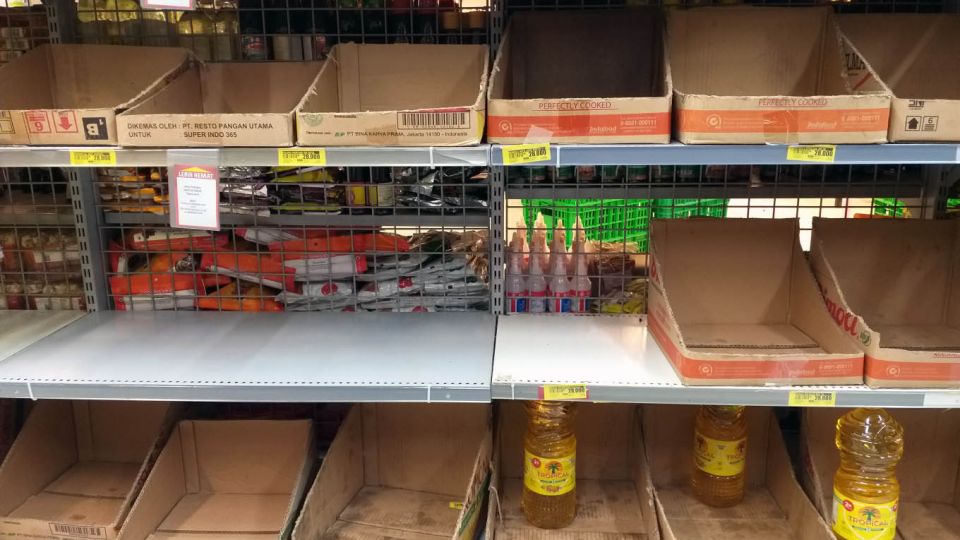January 31, 2022
JAKARTA – The single-price policy for all domestically produced, palm-fruit-based cooking oil came into force last week with little to no debate. To make cooking oil – an important staple in local cuisine – affordable to everyone, the government has fixed the price at Rp 14,000 (97 US cents) a liter nationwide for the next six months.
Without a thorough public discussion, we cannot know whether this is a good policy or not.
Soaring global prices of palm oil, the main ingredient for cooking oil in Indonesia, mean producers would rather sell abroad than on a home market where they cannot sell at market price.
Under the single-price policy, they are obliged to supply 1.5 billion liters of cooking oil at the government-set price, but they will be compensated handsomely.
It is a decision that makes both consumers and producers happy, while the government has no qualms about picking up the Rp 7.6 trillion bill for the subsidy.
But is it a good economic decision? Is it worth the price?
Where are the economists when we need them? Some have been coopted by the government, but what about the others? Their silence suggests either they have all gone socialist or they keep silent to avoid being bullied on social media for speaking against a populist policy.
Basic economic theory tells you the nominal price is not the real price you pay. The economic price is the opportunity cost of what you are giving up by making a specific decision. So, what exactly are we trading off when the government puts a single price on cooking oil?
An economist of whatever ideological persuasion (neo-liberal or socialist) will tell you that any form of subsidy is essentially bad for the economy, in more ways than one.
One of them is injustice. If the subsidy is politically inevitable, then just give the money to the poor to buy the stuff. Subsidizing the commodity benefits producers, whose income is guaranteed, and the wealthy, who pay the same price as the poor. They are the main beneficiaries of the subsidy.
Subsidies also lead to market distortion, sending wrong signals to consumers and producers, although not so much to producers whose income is guaranteed.
Letting the domestic price of cooking oil soar would force consumers to cut back on frying their food and switch to alternatives, from boiling and grilling to steaming or even – in the case of some types of fish – eating food raw. TV and YouTube channels would be filled with chefs showing us how to move away from frying.
Less fried food also reduces the “bad” cholesterol, so there is a public health argument as well.
Instead, we are now missing out on an opportunity to change our behavior because the government decided that we as a nation are so addicted that we cannot go without our fries.
And as with other commodities subsidized by the government, we are already hearing reports of massive hoarding of cooking oil. In many regions, it is simply not available at any price. It’s just a matter of time before we hear reports of subsidized cooking oil being smuggled out of the country to markets where it fetches higher prices.
Among retailers, the main beneficiaries are the giant supermarkets and major convenience store chains that have a fast stock turnover. Smaller stores, including corner pop-and-mom groceries, are stuck with stocks they bought when prices were high. Their owners were the lone voice in openly challenging the single-price program when it was launched last week.
The argument against the cooking oil subsidy is the same as with other subsidized commodities, from gasoline and electricity to the 3-kilogram gas canisters: They benefit producers and the rich rather than the poor, they distort market signals that remove economic incentives for change, they encourage rent-seeking and lead to misallocation of resources. Last week, Kompas reported about huge embezzlement in the government’s subsidized fertilizer program.
If the argument for a single price is that cooking oil as an essential commodity should be made affordable, then so should many other commodities whenever prices shoot up. And so should building materials, since housing is essential too, and many other things.
A common problem with subsidies is, however, that once they are in place, it is politically difficult if not impossible to end them. The gasoline subsidy is a case in point.
From a purely economic perspective, market forces, meaning supply and demand, are still the most efficient and effective way to settle prices — certainly better than leaving it to the whims of the government. Alas, as always, political and business considerations take precedence.
If the government is really concerned about the poor, it could simply increase existing social aid. The money to increase cash transfers is there, namely the very Rp 7.6 trillion set aside to finance the subsidy program, which would then be obsolete.
Putting cash into poor people’s hands would empower them to decide for themselves whether to spend that money on costly cooking oil or instead cut back on the fries and use the extra funds for the education of their children, for a new pair of shoes or for whatever else they deem most necessary.
There is nothing more morally reprehensible than taking money from the poor and giving it to the rich, which is what the single-price policy does.
The absence of any public debate on the policy is disturbing, as it indicates that the nation is unconcerned about the true price we end up paying.

